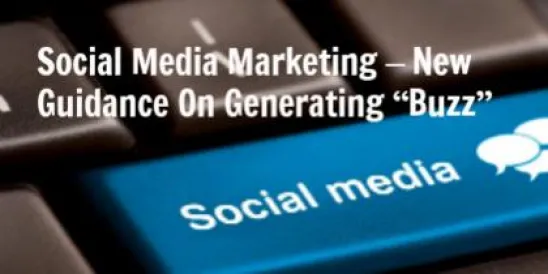For the first time since it issued its Guides Concerning the Use of Endorsements and Testimonials in Advertising in 2009, the FTC has provided new guidance on the use of social media to generate consumer interest (or “buzz”) in a brand.
Shoe manufacturer Cole Haan had a great social media marketing idea. They would run a contest through Pinterest. The winner would get a $1,000 shopping spree courtesy of Cole Haan. To enter, Pinterest users had to “pin” images of Cole Haan shoes on Pinterest. They even came up with a great slogan for the campaign: “Wandering Sole.” Finally, so that people could find the images easily, contestants were required to include the hash tag “#wanderingsole” in their pin descriptions.
This was a great marketing idea. Lots of Pinterest users would post pictures of Cole Haan’s product on Pinterest and generate buzz about Cole Haan shoes. Here is what one Pinterest page currently looks like:
There was only one problem; the Federal Trade Commission.
The FTC considered the posting of images of Cole Haan shoes by Pinterest users to be endorsements of the product. To be clear, the issue was not whether the Pinterest users actually intended to endorse the brand. Rather, the concern was whether viewers of the image might perceive the posting of the images to be endorsements. As such, the FTC investigated the marketing practice and issued a closing letter to Cole Haan regarding their investigation.
As stated in the closing letter, the FTC thought that the since the Pinterest “pins” constituted an endorsement, there should have been a “clear and conspicuous” disclosure concerning the fact that the “endorsers” (i.e., the Pinterest users entering the contest) were being compensated for their endorsement, namely, the chance to win the $1,000 shopping spree. The FTC did not believe that the “#Wanderingsole” hash tag was sufficient to provide this required disclosure. Fortunately, the FTC did not take enforcement action against Cole Haan, recognizing that the FTC had not squarely addressed this issue before.
So finally, we get to the point of this post. While I understand the FTC’s point (I really do), I think social media marketers will need more specific bright line guidance as to what type of disclosure is required. The reason is that in the social media context, the amount of text that may be capable of devoting to such disclosure can be very limited. It is noteworthy that the 2009 guidance issued by the FTC provided numerous examples to help us identify when endorsement disclosure s would be required. Not one of those examples, however, indicated what would constitute a sufficient disclosure.
In fact, one of the comments submitted (by Heath-McLeod) in connection with the 2009 guidelines requested that the FTC provide “minimum standards for the size and clarity of disclosures.” The FTC expressly rejected this request saying that:
“advertisers flexibility to meet the specific needs of their particular message is often preferable to attempting to mandate specific language, font, and other requirements applicable across-the-board to all ads. Advertisers thus have always been free under the Guides to make their disclaimers as large and clear as they deemed appropriate to convey the necessary information to consumers”
That’s good, I suppose. Advertisers need some freedom to do what they think is appropriate in the context of their marketing. But how, as a practical matter, are advertisers supposed to get comfortable that the disclosure they give is sufficient? For example, would it have been sufficient for the Pinterest users to have included the word “sponsored” in their pin description? How about just the word “ad?” Would that have been sufficient? It’s not clear.
Consider, for example, the fact that a similar disclosure having to be made through Twitter or using SMS (i.e., texting) might be very difficult given the 140 character limit. Now, consider further that the FTC guidelines for endorsements also require an additional disclosure when the person depicted in the endorsement is not a real consumer of the product. Perhaps Cole Haan’s hash tag should have read:
“#These pins are part of a contest. Contestants may win prize for posting pins of Cole Haan products. Persons in such pins may not be actual consumers of the pinned product”
Darn, that’s 141 characters. Maybe if I get rid of the “#” ….




 />i
/>i

